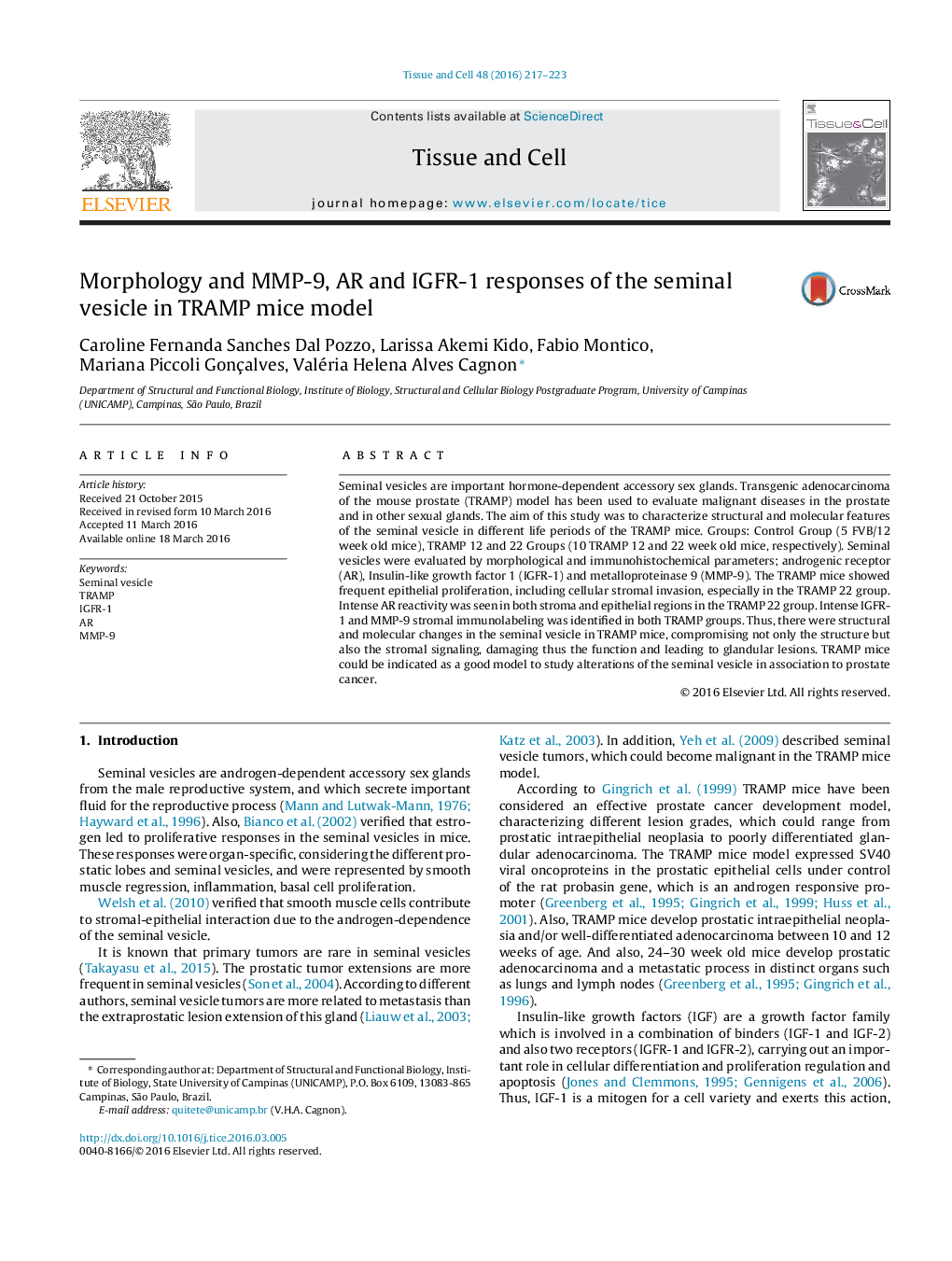| Article ID | Journal | Published Year | Pages | File Type |
|---|---|---|---|---|
| 2203506 | Tissue and Cell | 2016 | 7 Pages |
•TRAMP mice are a good experimental model to evaluate seminal vesicle adenocarcinoma.•AR, IGFR-1, MMP-9 imbalance contributed to malignant lesions in the seminal vesicle.•The morphological and molecular changes in the seminal vesicle could compromise the stromal signaling.
Seminal vesicles are important hormone-dependent accessory sex glands. Transgenic adenocarcinoma of the mouse prostate (TRAMP) model has been used to evaluate malignant diseases in the prostate and in other sexual glands. The aim of this study was to characterize structural and molecular features of the seminal vesicle in different life periods of the TRAMP mice. Groups: Control Group (5 FVB/12 week old mice), TRAMP 12 and 22 Groups (10 TRAMP 12 and 22 week old mice, respectively). Seminal vesicles were evaluated by morphological and immunohistochemical parameters; androgenic receptor (AR), Insulin-like growth factor 1 (IGFR-1) and metalloproteinase 9 (MMP-9). The TRAMP mice showed frequent epithelial proliferation, including cellular stromal invasion, especially in the TRAMP 22 group. Intense AR reactivity was seen in both stroma and epithelial regions in the TRAMP 22 group. Intense IGFR-1 and MMP-9 stromal immunolabeling was identified in both TRAMP groups. Thus, there were structural and molecular changes in the seminal vesicle in TRAMP mice, compromising not only the structure but also the stromal signaling, damaging thus the function and leading to glandular lesions. TRAMP mice could be indicated as a good model to study alterations of the seminal vesicle in association to prostate cancer.
Graphical abstractFigure optionsDownload full-size imageDownload high-quality image (120 K)Download as PowerPoint slide
